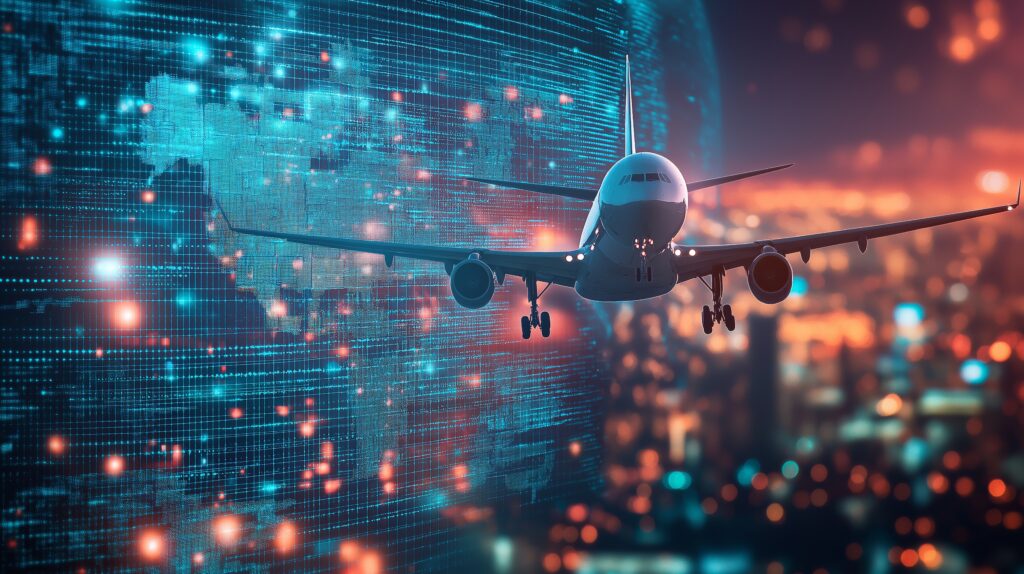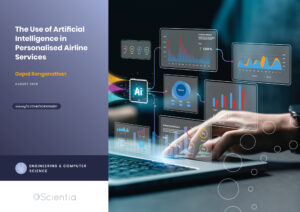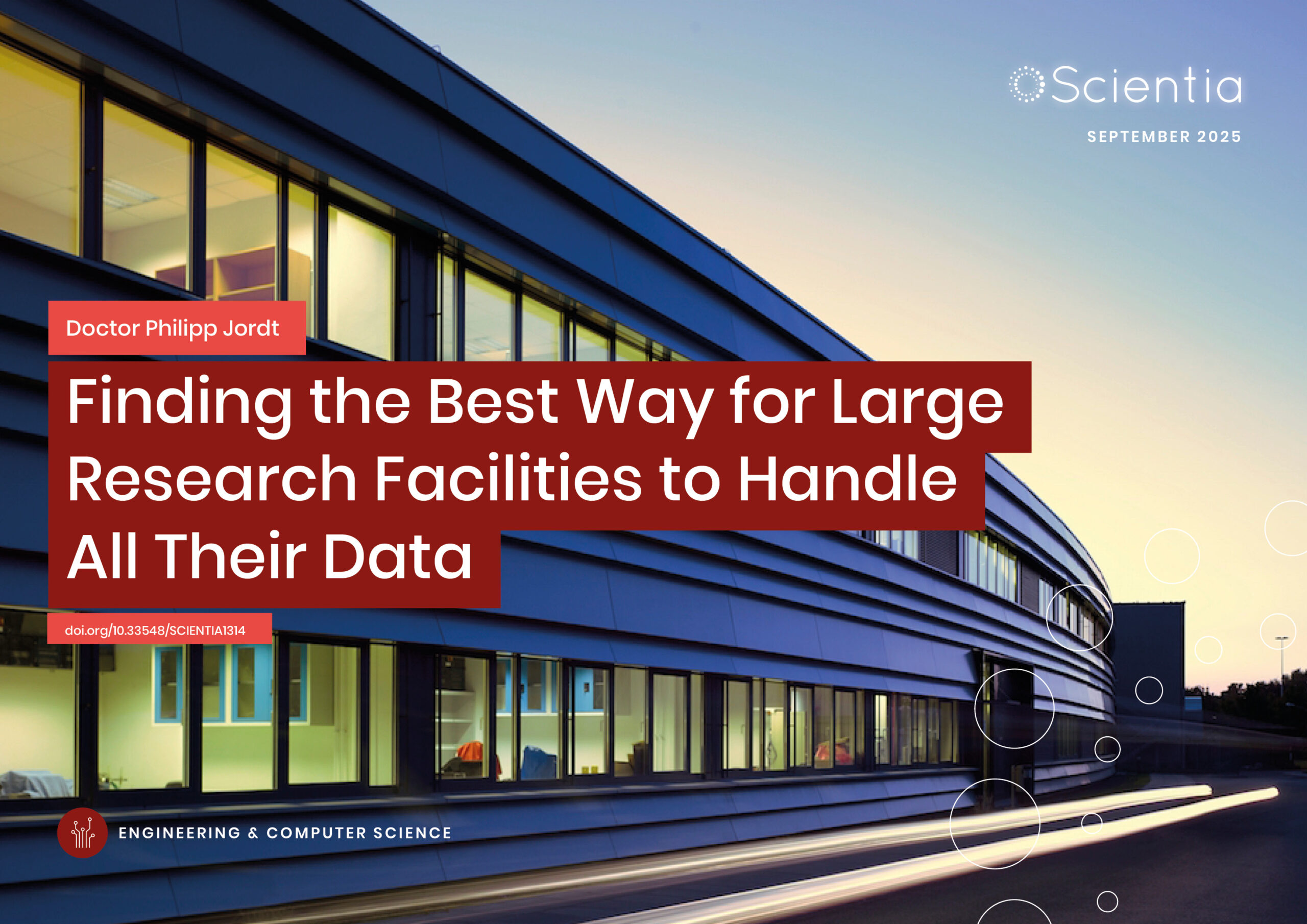Gopal Ranganathan | The Use of Artificial Intelligence in Personalised Airline Services
In today’s competitive airline industry, providing personalised services to passengers is becoming increasingly important for customer satisfaction and business success. Gopal Ranganathan from Quad Optima Analytics has developed an innovative artificial intelligence system to help airline executives implement and govern personalisation programmes. This cutting-edge technology aims to increase profits by tailoring services to individual customers while maintaining sound revenue management principles.
The Rise of Personalisation in Air Travel
For most travellers, flying is far from a personalised experience. From booking to boarding, passengers are often treated as interchangeable components in a vast, complex system designed to move as many people as possible from point A to point B. However, the airline industry is beginning to recognise the value of tailoring services to individual preferences and needs.
Air travel personalisation can take many forms, from customised promotions and targeted advertising to personalised in-flight entertainment recommendations and chatbot assistance. The goal is to improve customer satisfaction by providing services and offers relevant to each passenger’s unique preferences and circumstances.
However, implementing effective personalisation at scale is a significant challenge for airlines. With millions of passengers, countless possible service combinations, and the need to balance personalisation with overall revenue management, airlines require sophisticated systems to make it work.
This is where Gopal Ranganathan’s innovative artificial intelligence system comes in. As the founder and CEO of Quad Optima Analytics, Ranganathan has leveraged his extensive experience in airline revenue management to develop a powerful AI tool designed specifically to help airline executives implement and govern personalisation programmes.
An AI Copilot for Airline Executives
Ranganathan’s system, which he calls the Personalisation AI System (PAI), serves as an AI-powered decision support tool for airline C-suite executives. Rather than relying solely on static presentations, spreadsheets and dashboards, the PAI system taps directly into the airline’s real-time transaction data to model the current state of the organisation.
Ranganathan explains that today’s airline executives get most of their information through PowerPoint presentations, Excel spreadsheets and dashboards. His AI system is designed to give them a much more dynamic and data-driven view of personalisation opportunities.
The PAI system ingests massive amounts of data from passenger name records, which contain details of each passenger’s itinerary and booking. It then overlays this core data with information about personalisation actions (like targeted promotions or recommendations) and revenue management decisions.
Microsegments: The Building Blocks of Personalisation
A key innovation in Ranganathan’s system is the use of what he calls ‘microsegments’. These are multi-dimensional data structures that group similar passengers and transactions together, based on numerous attributes.
Ranganathan notes that traditional customer segmentation approaches are often too static and one-dimensional. His microsegments allow for a much more nuanced and dynamic understanding of customers.
For example, a business traveller might fall into different microsegments depending on whether they’re booking a short domestic flight for a day trip versus an international journey with their family. The PAI system can recognise these contextual differences and adjust its personalisation strategies accordingly.
These microsegments serve as the foundation for the PAI system’s artificial intelligence and machine learning capabilities. Advanced mathematical models called ‘tensors’ are embedded within each microsegment, allowing the system to rapidly process new data and generate insights.
Four Pillars of Personalised Intelligence
Ranganathan’s PAI system is built on four key components that work together to drive personalisation. First are the microsegments, which serve as the foundational data structures. Second is the forecast engine, which uses a variety of predictive modelling techniques to forecast key metrics like bookings, revenue, and customer loyalty for each microsegment.
Third is the optimiser, which uses advanced mathematical techniques to determine the best combination of personalisation actions for maximising desired outcomes (like revenue or profit) across all microsegments. Finally, the system generates specific, actionable recommendations for personalisation initiatives, along with forecasts of their potential impact.
Ranganathan emphasises that his system doesn’t just provide high-level insights. It gives executives and their teams specific actions they can take, such as sending targeted discount offers to loyalty members who are at risk of switching to a competitor.

Balancing Short-Term Revenue and Long-Term Loyalty
One of the key challenges in airline personalisation is balancing short-term revenue maximisation with long-term customer loyalty and market share growth. Ranganathan’s system is designed to help airlines navigate these trade-offs.
He explains that traditionally, revenue management has focused on short-term tactical decisions to maximise revenue on each flight. However, effective personalisation requires a more holistic view that considers customer lifetime value and long-term market positioning.
The PAI system allows airlines to set different optimisation objectives and constraints to reflect their strategic priorities. For example, an airline could configure the system to maximise short-term revenue in some microsegments while prioritising customer retention in others.
This flexibility is critical because not all personalisation efforts are equally valuable. Ranganathan’s research has identified four key scenarios for personalisation initiatives. These range from ideal situations where personalisation can drive increased bookings and higher prices to more challenging scenarios that may require drastic actions or a rethinking of the product offering.
Ranganathan explains that his system helps airlines identify which scenario applies to each microsegment. This ensures that personalisation efforts are targeted where they can have the most impact.
From C-Suite to Front Line
A key advantage of Ranganathan’s approach is that it provides a consistent framework for personalisation across all levels of the airline organisation. The same microsegment-based insights and recommendations that inform C-suite decision-making can also guide front-line staff in their interactions with customers.
Ranganathan emphasises that effective personalisation requires alignment from the top of the organisation all the way down to individual customer touchpoints. His system provides that alignment by generating insights and recommendations that are relevant at every level.
For example, the system might recommend a targeted upgrade offer for a specific microsegment of customers. This recommendation would inform high-level strategy discussions in the C-suite, guide marketing teams in designing the offer, and provide talking points for customer service agents interacting with eligible passengers.

The Future of Airline Personalisation
As airlines continue to invest in personalisation capabilities, Ranganathan sees several key trends emerging. These include increased use of artificial intelligence and machine learning, greater integration of personalisation across all customer touchpoints, more sophisticated use of contextual data, enhanced collaboration between different airline departments, and a growing focus on using personalisation to drive long-term customer loyalty and market share growth.
Ranganathan and his team at Quad Optima Analytics are continually refining and expanding their PAI system to help airlines navigate this evolving landscape. They are currently working on enhancements to incorporate more real-time data sources and to provide even more granular personalisation recommendations.
Ranganathan believes the potential for personalisation in the airline industry is enormous. However, he notes that realising that potential requires sophisticated tools that can handle the complexity and scale of airline operations. That’s what his team is focused on delivering.
Charting a Course for Personalised Skies
As air travel continues to recover from the disruptions of recent years, personalisation is likely to play an increasingly important role in airlines’ strategies for attracting and retaining customers. Ranganathan’s Personalisation AI System offers a powerful tool for airline executives looking to navigate this new area.
By combining cutting-edge artificial intelligence with deep industry expertise, Ranganathan and his team are helping to chart a course towards more personalised, satisfying, and profitable air travel experiences. As the PAI system continues to evolve and improve, it may well become an indispensable copilot for airline leaders seeking to soar in the age of personalisation.
SHARE
DOWNLOAD E-BOOK
REFERENCE
https://doi.org/10.33548/SCIENTIA1187
MEET THE RESEARCHER

Gopal Ranganathan
Quad Optima, Chicago, IL, USA
Gopal Ranganathan is the founder of Quad Optima, a company specialising in Advanced AI and Digital Twins. With a background in the airline, transportation, and travel industries, he has established himself as a leader in commercial departments and as a management consultant. Ranganathan advises C-Suite executives on AI strategy and works with managers to implement these strategies, focusing on delivering real return of investment on AI projects. He has developed a new paradigm for AI data modelling and advanced deep learning, aimed at generating significant revenue and profit opportunities for companies. Ranganathan is the author of a book on profit optimisation using advanced analytics and has written a paper on personalisation driven by sound revenue principles. He holds an MBA from the University of Chicago and a bachelor’s degree from the Indian Institute of Technology.
CONTACT
E: gopal@quadoptima.com
W: https://www.quadoptima.com/
FURTHER READING
G Ranganathan, Airline CEO’s AI system for driving personalization, Journal of Revenue and Pricing Management, 2023, 22, 166–170. DOI: https://doi.org/10.1057/s41272-022-00402-w

REPUBLISH OUR ARTICLES
We encourage all formats of sharing and republishing of our articles. Whether you want to host on your website, publication or blog, we welcome this. Find out more
Creative Commons Licence (CC BY 4.0)
This work is licensed under a Creative Commons Attribution 4.0 International License. 
What does this mean?
Share: You can copy and redistribute the material in any medium or format
Adapt: You can change, and build upon the material for any purpose, even commercially.
Credit: You must give appropriate credit, provide a link to the license, and indicate if changes were made.
SUBSCRIBE NOW
Follow Us
MORE ARTICLES YOU MAY LIKE
Revolutionising Chemical Safety: How AI Could Replace Animal Testing
Modern life exposes us to a staggering array of synthetic substances—over 350,000 chemicals are registered for use worldwide, found in products as diverse as pesticides, plastics, cosmetics, and pharmaceuticals. Ensuring the safety of all these compounds is a daunting task. Researchers led by Prof Jinhee Choi at University of Seoul are developing cutting-edge artificial intelligence models to predict the potential dangers toxicity of chemicals, with the aim of reducing the need for controversial animal experiments. By analysing vast toxicology databases and pioneering new AI techniques, Prof Choi’s team is working towards a future where the safety of everything from industrial compounds to household products can be assessed more quickly, cheaply, and humanely.
Dr Philipp Jordt | Finding the Best Way for Large Research Facilities to Handle All Their Data
As technology advances, physical experiments are performed by bigger, more powerful, and more sophisticated machines. Research conducted using these large-scale facilities (LSF) typically involves collaboration between the operating staff, instrument scientists, and external research groups, who propose specific experiments to be performed. With many people involved and such large volumes of data generated by each experiment, it has become challenging to make sure that results are collected, catalogued, stored, and distributed efficiently.
The German consortium DAPHNE4NFDI has been working to integrate Electronic Laboratory Notebooks (ELNs) into the Photon and Neutron (PaN) research community. One of their main goals has been to develop the decision-making process behind how research facilities, universities, and researchers can evaluate the range of ELNs available and decide on which solution to integrate into their operations.
Putting AI in your Ears with 3D Neural Networks
It’s difficult to communicate with someone when neither of you speak the same language; apps and online tools like Google Translate can help to bridge the gap, but they hardly make for a natural conversation. However, the rise of artificial intelligence (AI) has opened the door for the development of speech-to-speech technology, where spoken language is translated instantly in real time. To bring this idea closer to reality, a collaboration of European researchers led by Professor Cristell Maneux at the University of Bordeaux have proposed concepts for a 3D artificial neural network accelerator. This ultra-compact, highly efficient design could enable the construction of standalone earpieces capable of translating spoken language instantly, with no need for internet access.
Ongoing research by Professor Han Lamers (University of Oslo) and Professor Bettina Reitz-Joosse (University of Groningen) reveals how Fascist Italy weaponized ancient Rome’s language to legitimise its power and connect Mussolini’s regime to Italy’s imperial past. Their projects involve collaboration with an international team of mostly junior researchers based in Norway, the Netherlands, Austria, and Italy.
Professor Nancy Burnham | Imaging on the Nanoscale: Improving Techniques in Atomic Force Microscopy
Atomic force microscopy (AFM) provides the means to image surfaces with nanometre resolution, allowing scientists to look at the individual building blocks and forces that make up the world around us. Professor Nancy Burnham of Worcester Polytechnic Institute and her colleagues Lei Lyu and Lily Poulikakos at the Swiss Federal Laboratories for Materials Science and Technology (Empa) have worked on how we can reduce artefacts in these images and ensure they are accurately interpreted. By considering and applying these techniques, high-quality AFM research can be produced.





